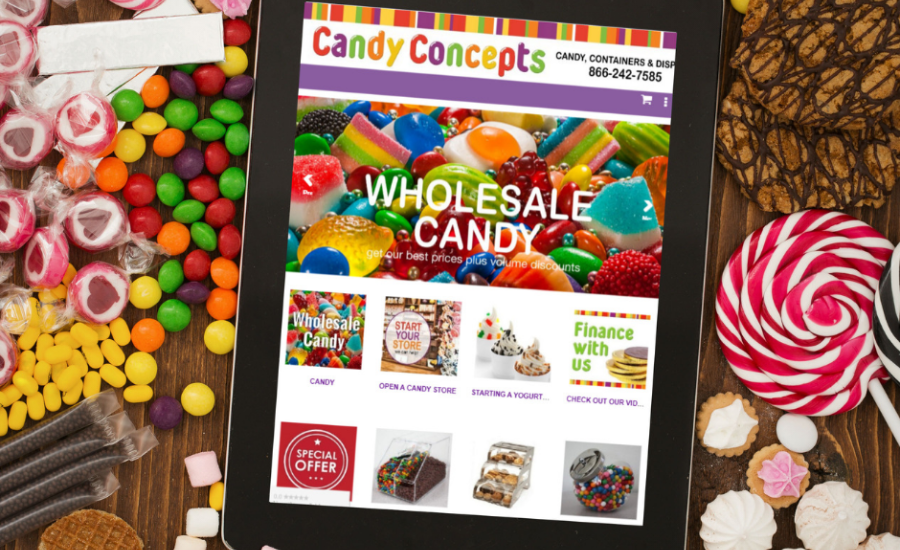I Luv Candi Fundamentals Explained
I Luv Candi Fundamentals Explained
Blog Article
Getting My I Luv Candi To Work
Table of ContentsUnknown Facts About I Luv CandiThe 30-Second Trick For I Luv CandiThe Facts About I Luv Candi RevealedThings about I Luv CandiSome Known Details About I Luv Candi
You can additionally approximate your very own earnings by using various presumptions with our economic strategy for a sweet shop. Typical regular monthly profits: $2,000 This kind of sweet store is commonly a little, family-run service, maybe recognized to residents however not attracting great deals of tourists or passersby. The shop could use a choice of common candies and a couple of homemade deals with.
The shop doesn't generally carry uncommon or costly products, focusing rather on economical treats in order to keep routine sales. Thinking a typical spending of $5 per consumer and around 400 consumers monthly, the monthly earnings for this sweet store would be about. Typical monthly earnings: $20,000 This candy shop take advantage of its tactical area in a hectic urban location, attracting a multitude of clients searching for sweet extravagances as they go shopping.

Along with its varied sweet option, this store could likewise sell relevant items like gift baskets, sweet bouquets, and uniqueness products, providing several revenue streams. The shop's location calls for a higher allocate rent and staffing yet results in greater sales volume. With an approximated average spending of $10 per client and about 2,000 clients per month, this shop can generate.
I Luv Candi Fundamentals Explained
Found in a significant city and tourist destination, it's a big facility, commonly spread over multiple floors and potentially component of a nationwide or international chain. The store offers an immense range of candies, consisting of exclusive and limited-edition items, and product like top quality clothing and devices. It's not just a store; it's a destination.
The operational prices for this kind of shop are significant due to the area, dimension, team, and includes supplied. Thinking an ordinary acquisition of $20 per client and around 2,500 clients per month, this flagship store could achieve.
Category Examples of Costs Typical Regular Monthly Cost (Range in $) Tips to Decrease Costs Lease and Utilities Shop rental fee, electrical energy, water, gas $1,500 - $3,500 Take into consideration a smaller sized location, negotiate rental fee, and make use of energy-efficient illumination and appliances. Inventory Sweet, treats, product packaging materials $2,000 - $5,000 Optimize inventory monitoring to minimize waste and track popular things to prevent overstocking.
8 Easy Facts About I Luv Candi Shown
Advertising And Marketing and Marketing Printed matter, on the internet ads, promos $500 - $1,500 Concentrate on economical electronic advertising and make use of social networks systems free of charge promo. Insurance policy Company obligation insurance policy $100 - $300 Look around for competitive insurance coverage prices and consider bundling policies. Devices and Upkeep Sales register, show racks, fixings $200 - $600 Buy used equipment when possible and imp source do normal maintenance to extend equipment life expectancy.

This means that the sweet-shop has gotten to a point where it covers all its taken care of costs and begins generating earnings, we call it the breakeven factor. Consider an instance of a sweet-shop where the month-to-month set expenses typically amount to approximately $10,000. A rough price quote for the breakeven factor of a sweet-shop, would certainly then be around (since it's the total fixed cost to cover), or marketing in between with a rate array of $2 to $3.33 each.
More About I Luv Candi
A large, well-located sweet-shop would clearly have a greater breakeven point than a tiny store that does not need much earnings to cover their costs. Curious concerning the success of your sweet-shop? Try our user-friendly economic plan crafted for sweet stores. Merely input your own presumptions, and it will assist you calculate the quantity you require to make in order to run a lucrative organization - lolly shop sunshine coast.
Another hazard is competition from other sweet-shop or larger merchants who could provide a wider selection of products at reduced rates (https://www.tumblr.com/iluvcandiau/746132173917241344/i-luv-candi-your-premium-candy-store-located-on?source=share). Seasonal changes popular, like a decrease in sales after holidays, can additionally impact productivity. Additionally, transforming consumer choices for much healthier snacks or nutritional restrictions can minimize the allure of standard sweets
Lastly, financial downturns that minimize customer spending can impact sweet-shop sales and earnings, making it important for sweet-shop to handle their expenses and adapt to altering market problems to stay lucrative. These dangers are often included in the SWOT analysis for a candy shop. Gross margins and internet margins are vital indicators used to evaluate the earnings of a sweet-shop organization.
Our I Luv Candi PDFs
Basically, it's the earnings staying after deducting costs straight associated to the candy supply, such as purchase prices from vendors, production prices (if the sweets are homemade), and staff incomes for those associated with production or sales. https://b31w8r34xr0.typeform.com/to/tCdfpZhH. Internet margin, alternatively, consider all the expenditures the sweet shop sustains, including indirect costs like management costs, advertising, rent, and tax obligations
Sweet shops normally have an average gross margin.For circumstances, if your sweet store gains $15,000 per month, your gross revenue would certainly be roughly 60% x $15,000 = $9,000. Take into consideration a candy store that marketed 1,000 candy bars, with each bar valued at $2, making the total profits $2,000.
Report this page